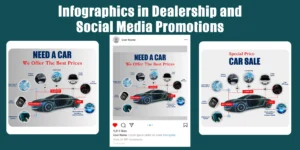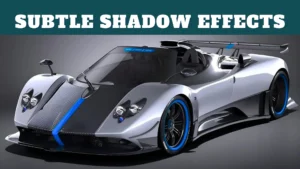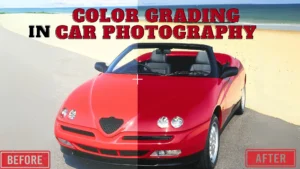Effective communication is key to driving customer engagement and boosting sales in the fast-paced automotive industry. Email marketing remains one of the most powerful tools for automotive dealerships, allowing them to connect with customers directly. Designing high-impact email templates is essential to maximize the impact of these communications. This article will guide you through the key components and best practices for creating effective email templates tailored for automotive campaigns.
Table of Contents
Toggle1. Understanding Your Audience Before Designing an Email Templates
Before diving into design, it’s crucial to understand your target audience. Automotive customers can range from first-time buyers to seasoned enthusiasts. You can segment your audience based on demographics, interests, and behaviors to make your messaging more effective. This segmentation will help inform the design and content of your email templates.

Key Considerations:
- Customer Preferences: Know what vehicles or services are most appealing to different segments.
- Buyer Journey Stage: Tailor your messages based on whether recipients are in the research phase or ready to purchase.
2. Crafting a Compelling Subject Line
The subject line is the first impression your email makes, and it plays a significant role in open rates. A compelling subject line should be concise, engaging, and relevant.
Tips for Effective Subject Lines:
- Use action-oriented language (e.g., “Discover Your Dream Car Today!”)
- Incorporate personalization (e.g., “John, Your New Car Awaits!”)
- Create urgency (e.g., “Limited-Time Offer on All SUVs!”)
3. Designing an Eye-Catching Header
The header of your email sets the tone for the entire message. Include your dealership logo and a strong tagline that resonates with your brand identity.
Design Elements:
- Logo Placement: Ensure your logo is prominently displayed and clickable, leading to your website.
- Color Scheme: Use colors that align with your brand and evoke emotions relevant to the automotive industry, such as trust and excitement.
4. Structuring the Content
A well-structured email is crucial for readability and engagement. Break your content into digestible sections to maintain the reader’s attention.
Recommended Structure:
- Introduction: Start with a personalized greeting and a brief introduction to the email’s purpose.
- Main Offer: Highlight your primary promotion or message (e.g., new car models, special financing options).
- Supporting Content: Include customer testimonials, featured vehicles, or links to blog posts for additional value.
- Call to Action (CTA): Use clear and compelling CTAs (e.g., “Schedule a Test Drive” or “View Inventory”) that direct readers toward the next steps.
5. Utilizing Visuals Effectively
High-quality visuals are critical in the automotive industry, where the appeal of vehicles is often driven by their aesthetics.
Visual Strategies:
- High-Resolution Images: Use stunning images of vehicles that showcase their features and benefits.
- Videos: Consider embedding short videos that highlight vehicle performance or customer testimonials.
- Infographics: Present complex information, such as financing options or vehicle comparisons, in an easy-to-digest format.
6. Mobile Optimization
With the increasing use of smartphones for email access, optimizing your email templates for mobile devices is crucial. Ensure that your designs are responsive and adapt to different screen sizes.
Mobile Optimization Tips:
- Single-Column Layout: Simplify your layout for easier navigation on smaller screens.
- Larger Fonts: Use readable font sizes that are legible without zooming.
- Touch-Friendly CTAs: Ensure buttons are large enough for easy tapping.
7. Personalization and Dynamic Content
Personalization enhances customer engagement and can significantly improve conversion rates. Use data to create dynamic content that resonates with individual recipients.

Personalization Techniques:
- Dynamic Fields: Include personalized greetings, recent vehicle searches, or tailored offers based on past interactions.
- Behavioral Triggers: Automate emails based on customer actions, such as abandoned carts or service reminders.
8. Testing and Optimization
Once your email template is designed, conduct A/B testing to determine what resonates best with your audience. Test different subject lines, CTAs, and layouts to identify the most effective elements.
Key Metrics to Monitor:
- Open Rates: Measure the effectiveness of your subject lines.
- Click-Through Rates (CTR): Evaluate which content and CTAs drive the most engagement.
- Conversion Rates: Track the success of your email in driving sales or leads.
9. Compliance and Best Practices
Ensure your email campaigns comply with regulations such as the CAN-SPAM Act and GDPR. Include an easy way for recipients to unsubscribe and respect their privacy.
Best Practices:
- Include a Privacy Policy Link: Reassure customers that their data is secure.
- Provide Clear Unsubscribe Options: Maintain transparency and trust with your audience.
Conclusion
Designing high-impact email templates for automotive campaigns requires a blend of strategic planning, creative design, and customer-centric messaging. By understanding your audience, utilizing compelling visuals, and optimizing for mobile, you can create effective email campaigns that drive engagement and conversions. As you implement these best practices, remember to continually test and refine your approach to keep up with the evolving preferences of your customers. With the right tools and strategies, your email marketing can become a powerful asset for your automotive business.










